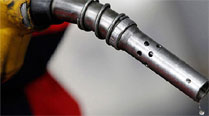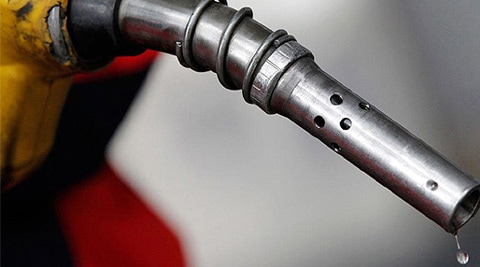Opinion Crude opportunity
A cess on petrol/ diesel to bankroll infrastructure projects is an idea for this moment.

 A fund created through a fixed levy could provide the initial equity contribution for new infrastructure projects driven by states, which can then leverage it to raise debt funding.
A fund created through a fixed levy could provide the initial equity contribution for new infrastructure projects driven by states, which can then leverage it to raise debt funding.
Given India’s long record of fiscal imbalances, few governments at the Centre have had the good fortune of starting off with economic tail winds behind them. The UPA, during the first half of its 10-year stint at the helm, was lucky enough, having taken over in 2004. Growth was rebounding and capital flows were abundant in that era of cheap money. A continuing grouse of the current Narendra Modi-led government is that it has been left with a bad hand on the economic front — the last couple of years saw growth rates below 5 per cent and the government balance sheet looks stretched.
That may well be true. But in a fortuitous turn of events, the government, which faced the daunting challenge of boosting investments, has been presented with a terrific opportunity to raise funds that could possibly finance infrastructure, at a time when private corporates are loath to do it, even if they are sitting on a mountain of cash.
On December 15, Brent crude hit a five-year low of approximately $60 a barrel. The slide in global crude oil prices opens a window of opportunity for the government to impose a surcharge or an additional cess on either petrol or diesel, allowing the state to bankroll infrastructure projects such as the construction of roads, ports, new cities and towns or industrial corridors. Public finance experts see a cess or a surcharge as a bad tax because it is invariably open-ended and the record of utilisation of funds has not been inspiring, going by the cess collected under various heads by Central ministries. There is also the philosophical argument that since collections from the levy of a cess are not shared with states, it goes against the grain of cooperative federalism.
But a departure from the past could help. A new levy on either petrol or diesel, or both, instead of cutting prices each time crude prices fall further could help raise Rs 10,000-20,000 crore annually. To convince taxpayers, a fresh levy should be imposed only for a limited period, say, three to five years, and then be reviewed by Parliament, which anyway approves such levies and votes on the spending of the proceeds. The money raised could then be transferred to the Public Account and a separate fund could be created to help finance equity or other contributions to defined infrastructure projects, especially those being promoted by the states, rather than restricting the proceeds to just the oil industry. The administration of the fund could lie outside the government. It could be administered by an agency that is accountable to government, its membership consisting of representatives from both Central and state governments as well as those respected for their governance and public policy record.
Funding infrastructure for a new city or a township is not easy. Take the example of Andhra Pradesh, where Chief Minister Chandrababu Naidu has reached out to global investors, underlining the fact that many states are finding it tough to create assets, given the slowdown over the last few years and the knock-on impact of revenues falling well below estimates this fiscal. A fund created through a fixed levy has the potential to provide, for instance, the initial equity contribution for new infrastructure projects promoted or driven by the states, which can then leverage it to raise debt funding. Any such offer of funds should be contingent on certain conditions, such as an improved or new governance structure in the agencies building or developing infrastructure projects, including new cities, besides commitments from those drawing these funds to charge development and user fees.
Given the natural scepticism surrounding the use of funds by the government, convincing the country’s taxpayers will be important. That confidence could be raised if the government were able to put in place a system where the utilisation of the fund was closely monitored, reviewed and placed in the public domain. India’s national auditor, the CAG, does this job now, but it would help if lawmakers exercised greater oversight over this process.
Historical trends show that the consumption pattern of some petro products has not altered much because of oil prices being on the boil, except in the case of diesel, to an extent. But more importantly, if there is to be a recovery after the slowdown of the last few years, it is inevitable that the states have to shoulder a greater part of the burden of infrastructure development. Given the resource crunch, and the fact that over half of the revenue of many states goes into paying salaries, pensions and interest charges, there is little capital spending. Realistically, what that means is that the Centre will have to step in to bridge the gap to help build durable assets, which will hopefully pay them back for their investments.
A large stretch of India’s national highways were built from the proceeds of a cess first imposed well over a decade ago. The spin-offs are reflected in the growth of industries and services close to the highways. That is now part of the legacy of the previous NDA government, led by Atal Bihari Vajpayee. It is ironic that the UPA, which had arguably the best economic advisors on board, scored poorly on execution. The Modi government may score high on the quality of its economic advisors but it has also promised better execution. The chance of a windfall, offered by the decline in crude prices, has to be seized.
shaji.vikraman@expressindia.com


